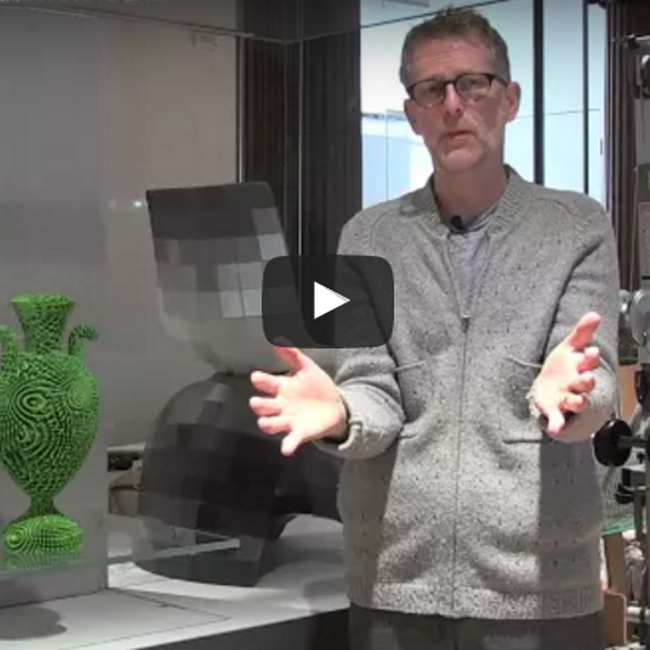Last week we covered Michael Eden’s incredible 18th-century Wedgwood-inspired pottery forms, digitally designed and produced using Additive Manufacturing. His current History Re-printed (November 21- March 28, 2016) exhibition at the Holburne Museum in Bath, England, is a beautiful display of his digitally created pottery. In this video, produced by The Cooper-Hewitt, Eden dives into his recent work, explaining his process and inspirations behind his Tall Green Bloom urn.
“For over 25 years, I made ceramics,” Eden explains. “I was a potter throwing pots on the wheel, supplying shops and galleries. Alongside making pots, I had become interested in computers. I was really intrigued about the two contrasting ways of creating things. I started to use 3D software, CAD software. I used it as a sketching tool but alongside traditional sketching.”
In the video, Eden explains his titles, which inform the viewer and strengthen his concept.
“I’m playing with words a little bit in the titling of this. I want to reference growth in terms of growth of a new technology, growth of new ideas, growth of new ways of working, but the boom part, the explosion is the shock of the new, I suppose, is overturning preconceptions. It’s challenging thinking.”
What do you think of Michael Eden’s reimagined Wedgwood pottery? Tell us in the comments!

It’s certainly design, it’s certainly design based on the vessel form. We grow with new ideas. I like the old way of making vessels on the wheel. Vessels from the wheel can become sculpture as well. But most of the forming happens on the wheel and soon after. With Michael Eden’s Bloom Vessels, most of the forming happens on the computer. It makes forming by hand seem like a primitive method, even on the electric wheel.
Every generation has its way. I love forming by hand, and the subsequent vessel. To me, the material of Eden’s form looks like plastic. I don’t actually mind this, but it occupies a different place in my perspective than objects I can see are made from clay, somewhere between industrial ceramics and sculpture. At any rate, the CAD-assisted, hands-free actual vessel sculpture here does invite the eyes and hands very much.
My own personality and inclinations do not lend themselves to this way of working. But I wonder what the possibilities of this technique might be? I feel this will become something other than pottery, just as photography immediately became something other than drawing.